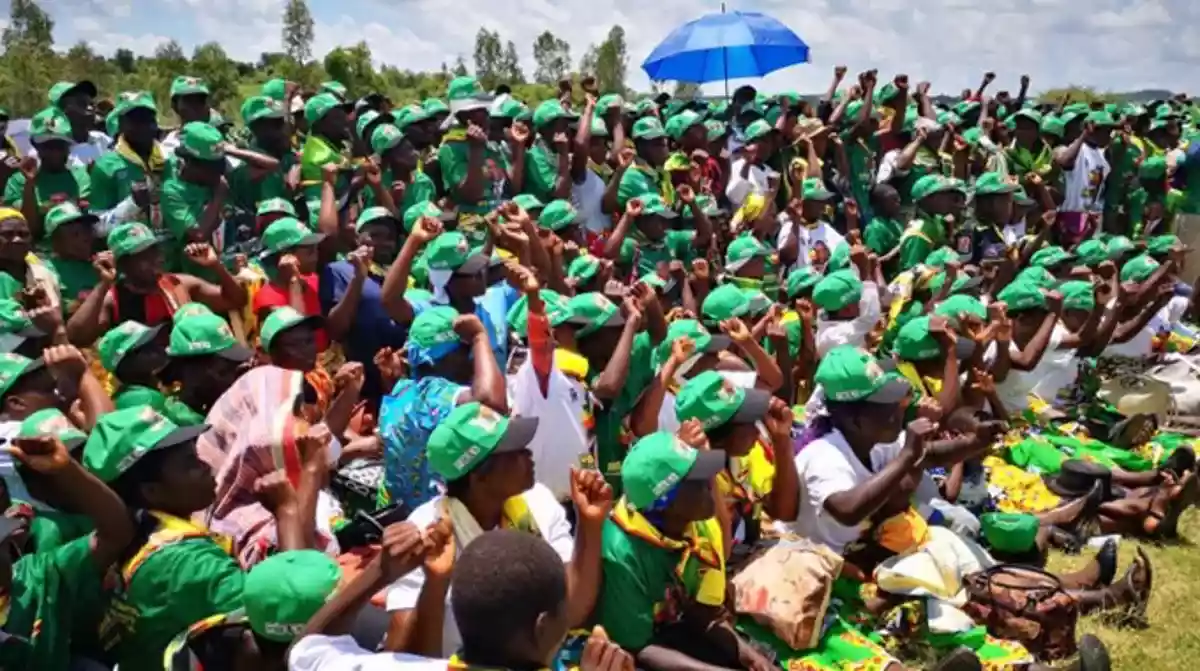
LEADING academic, Mcdonald Lewanika has described Zanu PF’s campaign rallies held ahead of the August 23 harmonised elections as the ruling party’s project to legitimise its hegemony.
He said the rallies were also used together with electoral manipulation, violence and intimidation to ensure a resounding victory for the ruling party.
In a study titled Zanu PF Bigwig Rallies as Performative Politics, Lewanika argued that Zanu PF uses rallies to maintain its hegemony.
“While essential to understanding the party and politics in Zimbabwe, this dogged focus on the illicit often neglects how, in typical electoral authoritarian fashion, Zanu PF makes differential use of coercive clientelist and persuasive clientelist mobilisation across constituencies and elections,” he said.
During the election season, Zanu PF bussed supporters from various provinces to beef up numbers at its rallies, and also made such sensational claims as having marshalled 124 000 supporters for the rally Zaka in Masvingo province in July this year.
“A rally is a public event at which speakers address an audience face-to-face for the ostensible purpose of politically mobilising,” said Lewanika.
“It is a dynamic, often persuasive act that engages in sense-making, sense-spreading and distributing the sensible through multiple performances, including slogans, praise-singing, speeches, dances and visual symbols.”
In his study, Lewanika noted: “Beyond theatre, spectacle and performance, rallies are an essential mode of political communication to citizens in sub-Saharan Africa from politicians and parties.”
- Rallies legitimise Zanu PF hegemony: Academic
Keep Reading
He said rallies were an integral part of the electoral process and retain a significant role in providing space for parties to seek legitimacy through direct contact with the electorate.
“Bigwig rallies take place at a scale more prominent than the ward, constituency and district administrative levels and are presided over and organised by party agents and structures from the provincial and national levels,” Lewanika said.
“While taking place in a particular area, these rallies differ from regular/local rallies because of who addresses them, in this case, party bigwigs from the presidium, namely the party president, vice-president(s) and party chairperson. The presence of these ‘bigwigs’ makes these rallies significant national-level events.
“Bigwig rallies are integral to Zanu PF’s legitimacy-seeking and voter mobilisation strategies. The communicative power of the bigwig rally goes beyond what is said to include what is projected and understood by various audiences.”
He also argued that the rallies were elaborate productions at which party heavyweights communicate messages and make meanings concerning these various audiences.
“They lay down the law and line of march for party structures, shape collectivities and frame candidates, the electoral contest, and their opponents. They solicit votes based on various claims of representativeness and legitimacy to various audiences,” Lewanika said.
However, Zanu PF acting information director Farai Marapira dismissed the claims saying the article is not based on scientific proof.
“It is based on novel writing. People attended willingly; there was no coercion. The article lacks substance with little to no empirical evidence. He should leave the realm of political writing and pursue fiction writing. Politics is played on the rules of facts,” Marapira said.











